
 来源:中国非物质文化遗产网
来源:中国非物质文化遗产网  作者:中国非物质文化遗产保护中心
作者:中国非物质文化遗产保护中心  创建时间:2019-04-01 09:54:00
创建时间:2019-04-01 09:54:00 编者按:“中国非物质文化遗产保护中心”微信公众号将在以往译介工作基础上,继续开展对联合国教科文组织相关非遗名录项目内容的翻译介绍,每期更新两个项目。本专题项目简介译文仅供广大读者参考使用,不妥之处,欢迎留言指正。
译介项目十九
马里亚奇乐队,弦乐、歌及小号
Mariachi, string music, song and trumpet
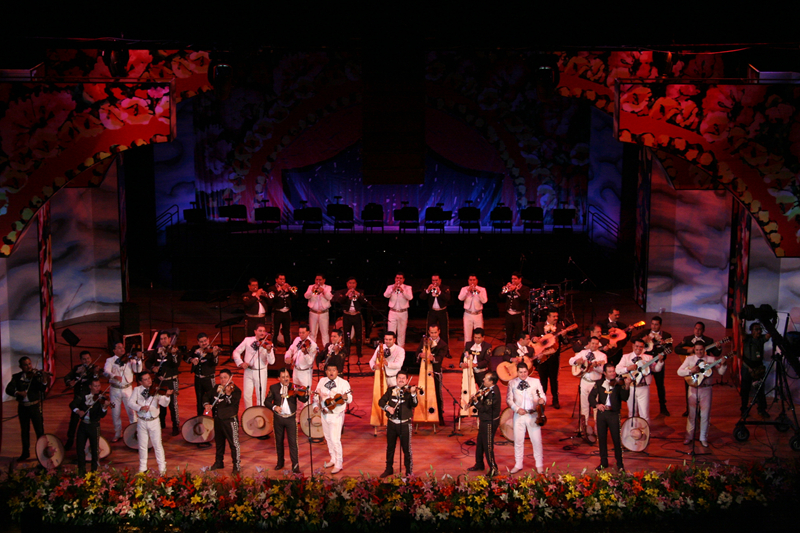
图1 马里亚奇乐队,弦乐、歌及小号
项目基本信息
入选年份:2011
申报国家:墨西哥
名录名册类型:人类非物质文化遗产代表作名录
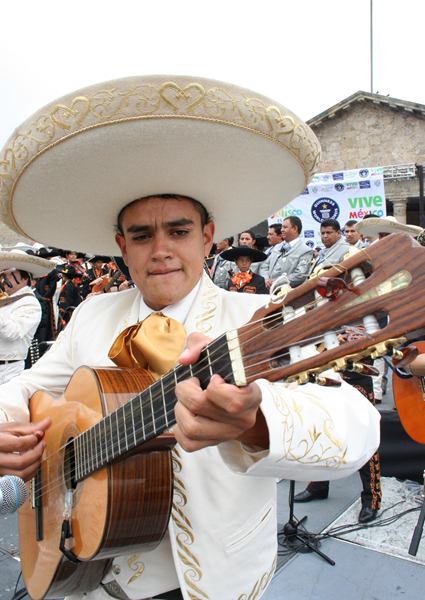
图2 马里亚奇乐队,弦乐、歌及小号
英文简介
Mariachi is a traditional Mexican music and a fundamental element of Mexican culture. Traditional Mariachi groups, made up of two or more members, wear regional costumes adapted from the charro costume and interpret a broad repertoire of songs on stringed instruments. Ensembles playing ‘modern Mariachi’ include trumpets, violins, the vihuela and guitarrón (bass guitar), and may have four or more musicians. The wide repertoire includes songs from different regions, jarabes, minuets, polkas,valonas,schottisches, waltzes and serenades, in addition to corridos (typical Mexican ballads narrating stories of battles, outstanding deeds and love affairs) and traditional songs depicting rural life. Modern Mariachi music has adopted other genres such as ranchera songs, the bolero ranchero and even the cumbia from Colombia. The lyrics of Mariachi songs portray love of the earth, hometown, native land, religion, nature, fellow countrywomen and the strength of the country. Learning by ear is the main means of transmission of traditional Mariachi, and the skill is usually passed down from fathers to sons and through performance at festive, religious and civil events. Mariachi music transmits values of respect for the natural heritage of the regions of Mexico and local history in the Spanish language and the different Indian languages of Western Mexico

图3 马里亚奇乐队,弦乐、歌及小号
中文简介
马利亚奇是一种传统的墨西哥音乐,也是墨西哥文化的基本元素。传统的马利亚奇乐队,由两人或两人以上的成员组成。他们身着由恰罗服装改造的地方服装,用弦乐器演奏一系列曲目。演奏“现代马利亚奇音乐”的乐队包括小号、小提琴、比尤埃拉琴和低音吉他,一般由四名或更多乐手组成。马利亚奇曲目广泛,除了科里多(典型的墨西哥民谣,讲述战争、杰出事迹和爱情故事)和描述乡村生活的传统歌曲外,还包含不同地区的歌曲,如哈拉贝舞曲、小步舞曲、波尔卡舞曲、瓦洛纳斯舞曲、苏格兰慢步圆舞曲、华尔兹、小夜曲。现代马利亚奇音乐还采用其他类型音乐,比如兰切拉歌曲、波莱罗舞曲,甚至还有哥伦比亚的坤比亚舞曲。马利亚奇的歌词表达了对大地、家乡、祖国、宗教、自然、女同胞和国力的热爱。用耳朵去学习是传统马利亚奇传承的主要方式。通常,父亲通过节庆、宗教和民间活动中的表演,将技巧传给儿子。马利亚奇音乐通过西班牙语和墨西哥西部地区不同的印第安语,传播尊重墨西哥地区自然遗产和当地历史的价值观。
译介项目二十
壬生的花田植,广岛县壬生水稻插秧仪式
Mibu no Hana Taue, ritual of transplanting rice in Mibu, Hiroshima
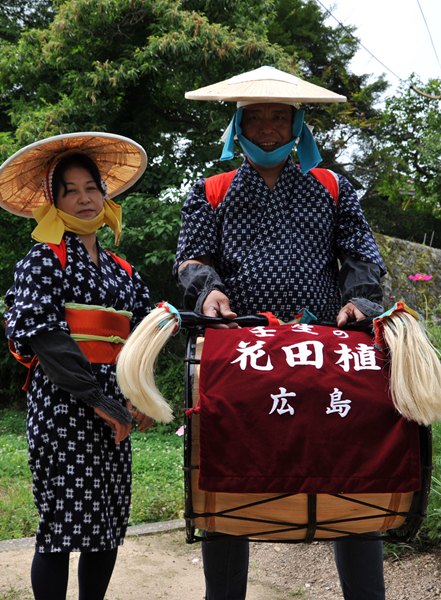
图4 壬生的花田植,广岛县壬生水稻插秧仪式
项目基本信息
入选年份:2011
申报国家:日本
名录名册类型:人类非物质文化遗产代表作名录
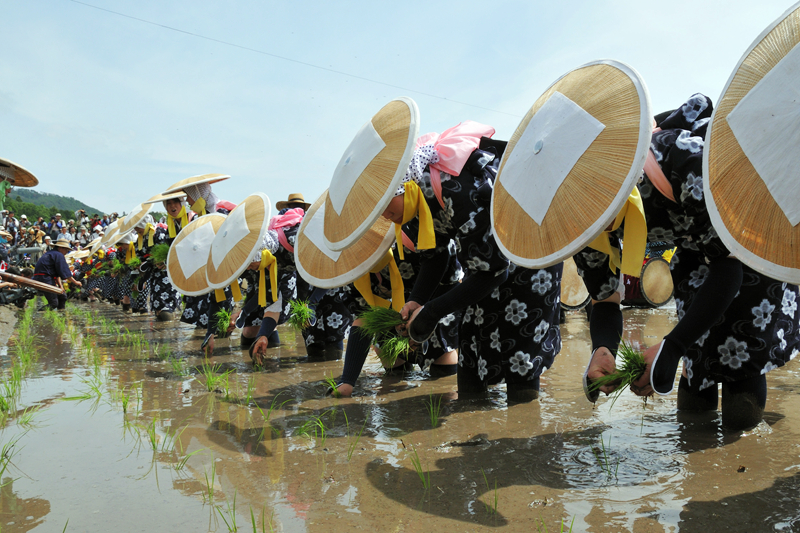
图5 壬生的花田植,广岛县壬生水稻插秧仪式
英文简介
Mibu no Hana Taue is a Japanese agricultural ritual carried out by the Mibu and Kawahigashi communities in Kitahiroshima Town, Hiroshima Prefecture to assure an abundant rice harvest by celebrating the rice deity. On the first Sunday of June, after the actual rice transplanting has ended, the ritual enacts the stages of planting and transplanting. Villagers bring cattle to Mibu Shrine to be dressed with elaborately decorated saddles and colourful necklaces. An elder carrying a sacred stick then leads them to a rice field specially kept in reserve for the ritual. After the cattle have ploughed the field, colourfully dressed girls place seedlings inside a case while singing a song under the direction of an elder. Then the rice field is levelled with an implement (eburi), said to contain the deity of rice fields. The girls then transplant the seedlings one by one, walking backwards, followed by the eburi-user and the person carrying the seedlings, who level the field as they pass. Ritual songs are sung accompanied by drums, flutes and small gongs. Once this ritual transplantation is completed, the eburi is placed upside down in water with three bunches of rice seedlings. Transmission is ensured by the elders, who know the songs and music for rice planting and oversee the ritual’s smooth execution.
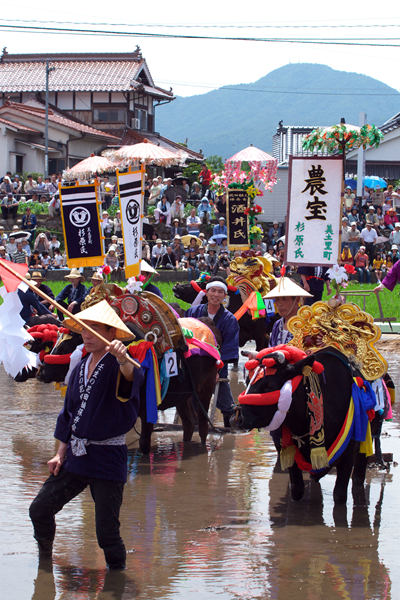
图6 壬生的花田植,广岛县壬生水稻插秧仪式
中文简介
壬生的花田植是日本广岛县北广岛町的壬生和川东社区举行的农业仪式,人们通过赞美稻荷神以祈求稻谷丰收。每年6月的第一个星期天,在真正的插秧结束后,开始进行仪式中规定的播种和插秧环节。村民们把牛牵到壬生神社前,给它穿戴上精心装饰的鞍和五颜六色的项链。一位长者手持一根神圣的棍棒,带领人们来到一片专门为该仪式而保留的稻田。牛犁完地后,在长者的指导下,身着绚丽服饰的姑娘们一边唱歌一边将秧苗放入匣子中。人们用一种名为艾博瑞(“eburi”音译)的工具将稻田整平,据说稻荷神就蕴藏在这种工具中。随后,女孩们一边倒着走,一边将秧苗一个接一个地插在田间。她们身边跟着使用艾博瑞和持秧苗的人,这些人经过时,要将田地整平。仪式歌曲由鼓、笛子和小锣伴奏。一旦插秧仪式完成,艾博瑞就会被倒插在水中,上面会挂上三束水稻秧苗。掌握水稻种植歌曲和音乐的长者确保该遗产的传承,并监督仪式顺利完成。